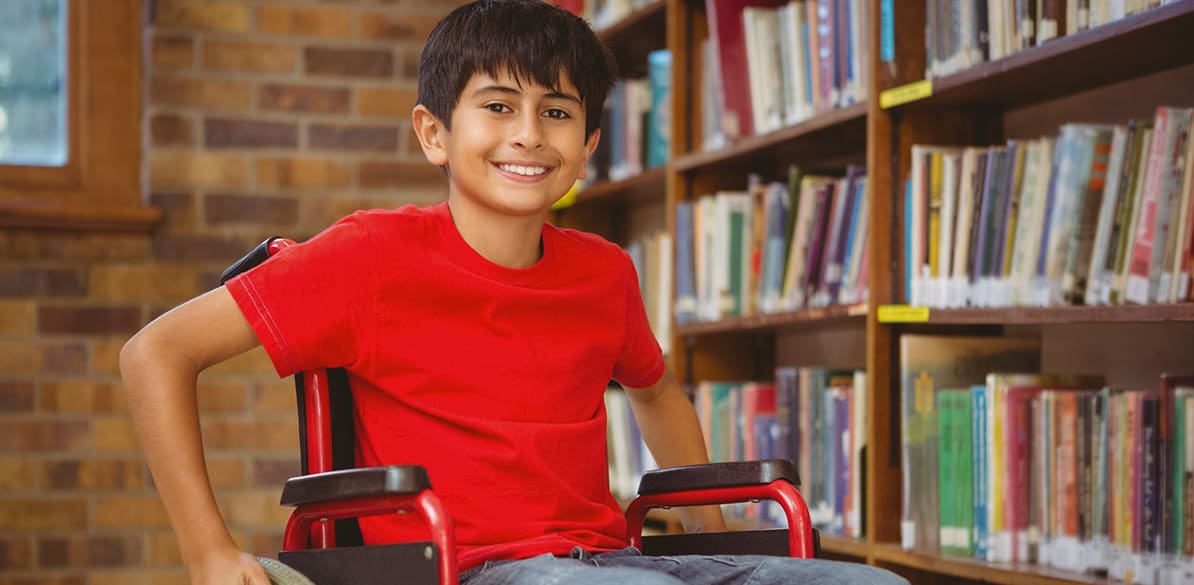Disability and traffic accidents among children

Tens of millions of people suffer injuries or disabilities every year from traffic accidents. According to data from the World Health Organization (WHO), injuries caused by traffic accidents are the leading cause of death in the 15-29 age group. Added to this are the thousands of children around the world who end up with traffic accident-related disabilities, many of them permanent.
On the occasion of the International Day of People with Disabilities on 3 December, in Child Road Safety, a section of the Accident Prevention and Road Safety division of Fundación MAPFRE, we would like to stress the enormous impact that road traffic accidents have on disabilities in children.
23% of fatalities due to traffic accidents in 2014 in Spain were children under the age of 14. In addition, there were 351 serious injuries in 2014. This figure includes all those children who incurred a permanent disability as the result of a traffic accident.
According to figures from WHO for 2012, traffic accidents were the fourth cause of death in children aged 5 to 9 and the third cause of death in children aged 10 to 14. Death as a result of injuries caused by traffic accidents is now the leading cause of death in the 15-17 age bracket, as reflected in the article “Ten strategies to protect children’s safety on the roads” (3.8 MB)“.
On a global level, the last World Report on Disability (852 KB) from WHO states that 15.6 % of the world’s population (785 million people) have some form of disability.
Some children are born with an impairment or a disabling health problem, while others can develop a disability as a result of diseases, injuries or malnutrition. This is where the reduction in the number of traffic accidents plays a key role. The “Goal Zero” initiative seeks to achieve zero traffic accident victims, whether this refers to fatalities or injuries.
Increased risk of accidents
As WHO points out, children are at much greater risk of suffering an injury in traffic accidents than other passengers. The reasons for this include their physical, cognitive and social development, which is much more limited than that of adults and hence makes them more vulnerable.
To add to their difficulties as pedestrians or cyclists, their bodies, as a general rule, are still developing. For example, their skulls are much softer, which makes them more susceptible to suffering a serious cranial injury.
Using a CRS to prevent the consequences of a traffic accident
Child restraint systems (CRS) are undoubtedly the best way of avoiding the potential consequences of a traffic accident. In this case, we are talking about when children are travelling as passengers.
If used properly, child seats can reduce the annual child fatality rate by around 70% for babies under one year old, and between 54% and 80% in young children.
The importance of adequate post-accident care
One of the points addressed by WHO in the article “Ten strategies for keeping children safe on the road” is precisely the importance of providing injured children with adequate aftercare.
As well as reinforcing emergency care and rehabilitation services when children are involved, other specific measures need to be taken to enable carers and teachers to be able to stabilize injured children immediately and safely and to trigger formal or informal activation plans in order to get them to medical centres. The article also argues the need to teach people involved in prehospital and hospital care about the physiological differences between children and adults and the means of fulfilling the diverse treatment needs of children, as well as the importance of equipping emergency vehicles with specific medical equipment and supplies.
WHO also advocates improving pediatric rehabilitation services, especially requirements for rehabilitation at home, and including access to community rehabilitation centres. WHO also defends improving access to counselling services to alleviate the psychological effects on children and their families that stem from injuries caused by traffic accidents, and addressing practical issues that include legal and financial matters.
We at Fundación MAPFRE have produced the report “Children with special needs and their safety in the car” (3 MB), where we address the importance of prompt and professional care, as well as the need for children with disabilities to be adequately protected when travelling by car.
In fact, it is estimated that in Spain there is a minimum of 60,000 children with special needs with regard to automobile travelling, although the actual figure is probably much higher.
On this subject, in “Child Road Safety” we include a specific section with recommendations on how to travel with children with special needs.
